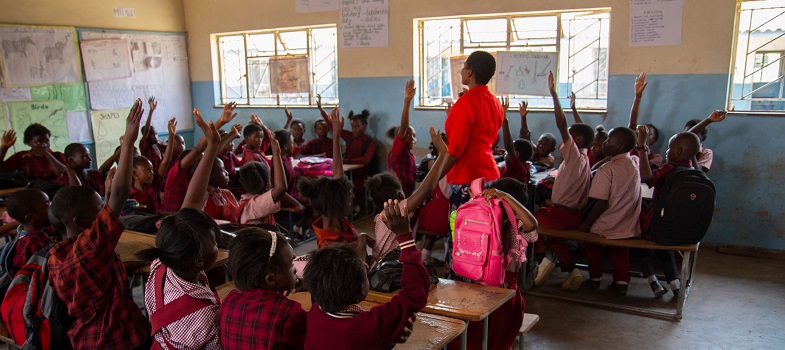Training guide
3. Pair work
3.2. Pair work in action
Activity 1.10: Pair work in action
|
Classroom examples on pair work
Pair work can be used for many different purposes. These examples show different ways of supporting all learners.
Classroom Example 1.3: Differentiation by taskRita teaches Grade 6 English. She chose some words which were causing problems for learners and wrote the words and definitions on separate pieces of paper. She asked the learners to form pairs with the person next to them. This meant that they worked with a friend, and often higher attainers were together and lower attainers were together. She gave each pair ten words and ten definitions and asked them to match them up. When they had finished and she had checked them, they swapped their words and definitions with another pair. Some pairs completed it very quickly but some found it difficult and needed a great deal of help, so it was difficult to organise. She discussed the experience with her friend, who taught Grade 4. She decided to keep the pairs how they were but gave them different sets of words. The high attainers had longer, more complex words – including some they had never met before and had to guess the meaning of – and the low attainers had shorter, more common words. She found it worked well. The low-attainers gained confidence and learned some common words which would help them in the future, and the high-attainers were challenged to try and read and understand new words. |
Classroom Example 1.4: Peer supportChangu teaches Grade 2 and her learners are beginning to read short sentences. In a literacy lesson, she wrote out some short sentences on pieces of paper. She put her children in pairs, and they practised reading the sentences aloud to each other. She had many different sentences but with similar, simple words. She was not very pleased with how it went as some of the pairs found it very difficult and some found it very easy. In the next lesson, she tried again with different sentences, but this time, she deliberately put the children in mixed-ability pairs. This worked much better as the good readers were able to help those who found it more difficult. She found that some of the slower readers gained confidence and could read the sentences, and the good readers enjoyed helping them to sound out the words. |
|
Did you notice...
|
